How to Address Customer Anger and Build Loyalty

In 2025, addressing customer anger professionally is no longer optional—it’s essential. Studies reveal that 61% of customers would switch to a competitor after just one poor service experience. This underscores how vital it is to approach every interaction with empathy and skill. When you resolve a customer’s frustration effectively, you not only mend the relationship but also foster loyalty. In fact, 74% of clients are willing to forgive mistakes if provided with exceptional service. Modern customer service demands a blend of human understanding and cutting-edge technology. Tools like Sobot’s omnichannel solutions ensure seamless interactions, helping you deliver consistent and personalized support across platforms. The question, "how will you deal with an angry customer?" is not just about resolution—it’s about creating opportunities to build trust and long-term connections.
Understanding the Causes of Customer Anger
Understanding customer anger is crucial for delivering exceptional service. By identifying the root causes, you can address issues effectively and prevent future dissatisfaction. Let’s explore the common triggers that lead to angry customers.
Common Triggers in Customer Service
Customer anger often stems from predictable scenarios. Research highlights several key triggers:
- Poor communication during service failures.
- Perceived dishonesty or misleading information.
- Delays in resolving issues or delivering products.
These triggers not only frustrate customers but also impact your business. According to a study, 70% of dissatisfied customers spread negative word-of-mouth, while 42% stop doing business altogether.
| Cause of Customer Anger | Percentage of Respondents |
|---|---|
| Stopped doing business | 42% |
| Spread negative word-of-mouth | 70% |
| Complained to the company | 60% |
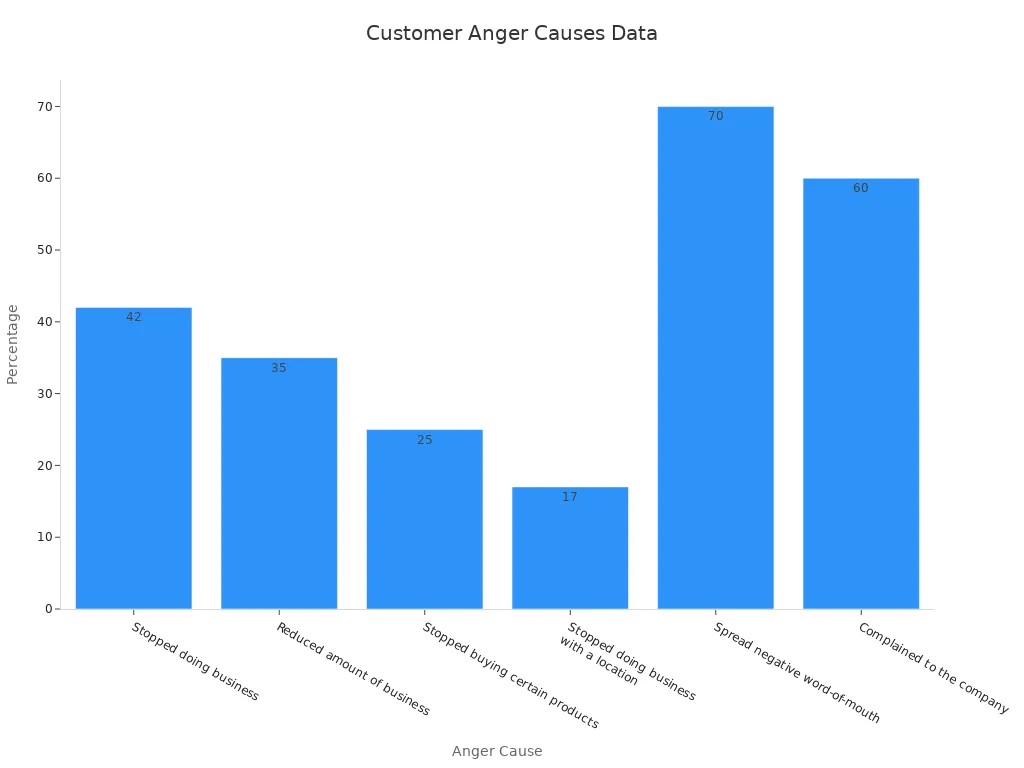
The Role of Miscommunication and Delays
Miscommunication and delays are among the most common reasons for angry customers. For example, Linda, a customer, felt deceived when a promotion for a free software bundle turned out to be nonexistent. Similarly, Sarah experienced frustration when her son's birthday gift arrived late, ruining her plans. These situations highlight how a lack of transparency and unmet promises can escalate emotions.
To mitigate these issues, you must prioritize clear communication and proactive updates. Tools like Sobot’s omnichannel solution can help streamline interactions, ensuring customers receive consistent and accurate information across all channels.
How Unrealistic Expectations Develop
Unrealistic expectations often arise from overpromising or unclear messaging. For instance, promotions that guarantee "instant results" or "fast delivery" can set unattainable standards. When these promises fall short, customers feel disappointed and angry.
To manage expectations, focus on transparency. Clearly outline what your product or service can deliver. Sobot’s AI-powered tools, such as its Voice/Call Center, enable you to provide real-time updates and personalized communication, helping to align customer expectations with reality.
Product or Service Failures and Their Impact
Product or service failures often serve as a significant source of customer anger. When a product doesn’t perform as promised or a service falls short of expectations, customers feel let down. This disappointment can quickly escalate into frustration, especially if the issue disrupts their daily lives or causes financial loss. Studies show that 58% of customers stop purchasing from a brand after experiencing a product failure.
Real-Life Examples of Failures
Imagine a customer purchasing a high-end smartphone only to find it overheating within days. Or consider a scenario where a subscription service fails to deliver critical updates, leaving users stranded. These failures not only inconvenience customers but also erode trust in your brand.
To address such situations, you must act swiftly. Acknowledge the issue, provide a clear explanation, and offer a solution. For instance, Sobot’s Voice/Call Center enables you to respond to customer complaints in real-time. Its intelligent IVR system ensures that calls are routed to the right agents, reducing wait times and frustration.
The Ripple Effect of Poor Handling
When product or service failures are ignored or poorly managed, the consequences can be severe. Customers often share their negative experiences online, influencing others to avoid your brand. According to a survey, 45% of customers post about their dissatisfaction on social media, amplifying the damage.
By leveraging tools like Sobot’s omnichannel solution, you can monitor customer feedback across platforms and respond proactively. This approach not only resolves individual complaints but also demonstrates your commitment to customer satisfaction.
Tip: Use AI-powered tools to identify recurring issues and prevent future failures. Sobot’s analytics features provide valuable insights into product performance and customer behavior, helping you make data-driven improvements.
Addressing product or service failures effectively can turn a negative experience into an opportunity to build loyalty. When customers see your dedication to resolving their concerns, they are more likely to trust your brand and continue doing business with you.
How Will You Deal with an Angry Customer? Key Strategies

Active Listening and Empathy in Action
Active listening and empathy are essential when handling angry customers. Customers often feel frustrated because they believe their concerns are not being heard. By actively listening, you can validate their emotions and begin the de-escalation process. For example, saying, “I understand how frustrating it is to wait longer than expected,” shows empathy and reassures the customer that their feelings matter.

Let customers express their frustrations fully before steering the conversation toward solutions. Research from the International Customer Management Institute reveals that active listening reduces escalations by 40%. Using tools like Sobot’s Voice/Call Center can enhance this process. Its unified workspace allows agents to access customer data instantly, enabling personalized responses that demonstrate empathy and understanding.
Tip: Use empathy phrases like “I hear you” or “I understand your concern” to validate emotions and build trust.
Staying Calm and Professional Under Pressure
Maintaining composure is critical when dealing with difficult customers. Angry customers often test your patience, but staying calm and professional ensures the situation doesn’t escalate further. A calm demeanor reassures the customer that you’re focused on resolving their issue. For instance, saying, “I am here to help resolve this for you,” conveys confidence and professionalism.
Working under pressure also requires adaptability. Customers expect swift solutions, especially during high-stress situations like late deliveries or billing errors. By prioritizing urgent cases and communicating efficiently, you can reduce wait times and improve satisfaction. Sobot’s AI-powered Voicebot can assist by automating routine inquiries, allowing you to focus on complex issues that require human intervention.
Example: A calm response to a rude customer over the phone, such as “I apologize for the wait and understand how frustrating that can be,” can defuse tension and steer the conversation toward solutions.
Using Positive Language to De-escalate Angry Customers
Positive language is a powerful tool for de-escalation. It reframes the conversation and shifts the focus from the problem to the solution. Instead of saying, “We cannot do that,” you could say, “Here is what I can do to help you.” This approach reduces defensiveness and encourages collaboration.
When handling difficult customers, avoid negative phrasing that might escalate emotions. For example, if a customer complains about a faulty product, respond with, “I’m truly sorry for the inconvenience. Let’s get this sorted out right away.” This not only acknowledges the issue but also sets a positive tone for resolution.
Sobot’s omnichannel solution supports this strategy by providing real-time analytics and monitoring tools. These features help agents identify customer sentiment and tailor their responses accordingly, ensuring a consistent and positive experience across all channels.
Tip: Use phrases like “Let me check that for you” or “I’ll do my best to resolve this” to keep the conversation constructive and solution-focused.
Offering Clear Solutions and Next Steps
When dealing with angry customers, offering solutions that are clear and actionable is essential. Customers often feel frustrated because they don’t know how their issues will be resolved. By identifying the root cause of their concerns and communicating the steps to address them, you can rebuild trust and confidence in your brand.
Here’s how you can effectively provide solutions:
- Identify the Problem: Start by understanding the customer’s issue thoroughly. Use tools like Sobot’s Voice/Call Center, which provides a unified workspace for agents to access customer data instantly. This ensures you have all the necessary information to diagnose the problem.
- Communicate the Resolution Plan: Clearly outline the steps you’ll take to resolve the issue. For example, if a product is defective, explain the replacement or refund process. Transparency about timelines is crucial to managing expectations.
- Offer Choices: Empower customers by giving them options. For instance, you could let them choose between a refund or a replacement. This approach not only resolves the issue but also improves their overall experience.
Studies show that transparency and multiple resolution options can significantly enhance customer satisfaction. Customers who feel involved in the resolution process are more likely to remain loyal, even after a negative experience. Sobot’s omnichannel solutions can help you streamline communication across platforms, ensuring customers receive consistent updates and feel valued throughout the process.
Tip: Always follow up after resolving an issue to confirm the customer’s satisfaction. This extra step demonstrates your commitment to their happiness and strengthens the relationship.
Knowing When to Escalate the Issue
Not all customer issues can be resolved at the first point of contact. Knowing when to escalate a problem is critical for maintaining customer satisfaction. Escalation ensures that complex issues are handled by the right person, reducing frustration and improving resolution rates.
Here are key indicators that escalation is necessary:
- Complexity of the Issue: If the problem requires specialized knowledge or authority, escalate it to a senior agent or manager. For example, billing disputes or technical malfunctions often need expert intervention.
- Repeated Attempts at Resolution: If a customer has contacted your team multiple times without a satisfactory outcome, escalate the issue immediately. This prevents further dissatisfaction and shows the customer that you take their concerns seriously.
- Emotional Distress: When a customer becomes highly emotional or upset, transferring them to a more experienced agent can help de-escalate the situation.

Effective escalation management is vital. Research indicates that poorly managed escalations, such as transferring customers multiple times, can lead to increased frustration. Sobot’s Voice/Call Center addresses this challenge with intelligent call routing, ensuring customers are connected to the right agent quickly. Additionally, its real-time monitoring and analytics help supervisors manage escalations efficiently, improving first-call resolution rates.
Note: Escalation agents should be well-trained in handling complex issues. They must aim to resolve the problem on the first call to enhance the customer experience and build loyalty.
Turning Negative Experiences into Loyalty-Building Opportunities
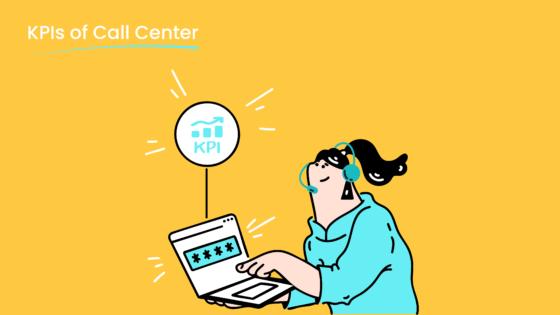
The Power of Follow-Ups in Customer Service
Follow-ups play a pivotal role in transforming difficult customers into loyal advocates. When you reach out after resolving an issue, it shows that you value their experience and care about their satisfaction. This simple gesture can significantly improve customer experience and retention rates.
- Studies reveal that follow-up communications enhance loyalty after service failures.
- Patients who received follow-up calls after hospital discharge spent more time out of the hospital compared to those who didn’t.
- Similarly, follow-ups after medication prescriptions improved awareness and safety.
In customer service, follow-ups can take many forms. A quick email to confirm resolution or a phone call to check on satisfaction can make a lasting impression. Sobot’s Voice/Call Center simplifies this process with automated follow-up features, ensuring no customer feels forgotten. By prioritizing follow-ups, you can turn angry customers into loyal customers who appreciate your dedication.
Personalized Apologies and Compensation
A personalized apology can mend even the most strained relationships. Customers expect brands to acknowledge their mistakes and make amends. According to McKinsey, 71% of customers want personalized experiences from the start. A sincere apology paired with tailored compensation can rebuild trust and foster customer loyalty.
For example, if a customer receives a damaged product, offering a heartfelt apology along with a replacement or discount demonstrates your commitment to their satisfaction. Sobot’s omnichannel solution enables you to track customer interactions and provide personalized responses, ensuring every apology feels genuine. This approach not only resolves the issue but also strengthens the bond between you and your customers.
Leveraging Feedback to Improve Services
Feedback from difficult customers is a goldmine for improvement. Their complaints often highlight areas where your service or product falls short. By actively seeking and acting on feedback, you can enhance your offerings and prevent future dissatisfaction.
Use tools like Sobot’s analytics to identify recurring issues and implement changes. For instance, if multiple customers report delays in delivery, you can optimize your logistics process. This proactive approach not only improves customer satisfaction but also demonstrates your commitment to continuous improvement. When customers see their feedback driving change, they feel valued and are more likely to remain loyal.
Building Trust Through Transparency and Consistency
Building trust with your customers requires transparency and consistency in every interaction. When you openly communicate your principles, processes, and product details, you create a foundation of reliability that resonates with your audience. Customers value brands that are honest and authentic, and this trust directly impacts their loyalty.
- 94% of consumers are more likely to stay loyal to brands that prioritize transparency.
- 86% of consumers prefer brands with an authentic image, which transparency helps establish.
Transparency also fosters accountability. When you respond to feedback and openly address challenges, customers see your commitment to improvement. For example, if a product delay occurs, proactively informing customers about the issue and the steps being taken to resolve it can prevent frustration. Sobot’s omnichannel solution supports this approach by enabling seamless communication across platforms, ensuring customers receive consistent updates.
Did you know?
A study by Dholakia, Westbrook, and Singh revealed that customers who completed satisfaction surveys were more likely to make repeat purchases. This highlights how leveraging feedback not only improves services but also strengthens customer relationships.
Consistency is equally vital. Customers expect the same level of service quality every time they interact with your brand. Sobot’s tools, such as its Voice/Call Center, ensure consistent service delivery by providing agents with a unified workspace and real-time customer data. These features allow you to maintain high standards, even during peak periods.
How Sobot’s Voice/Call Center Enhances Customer Recovery
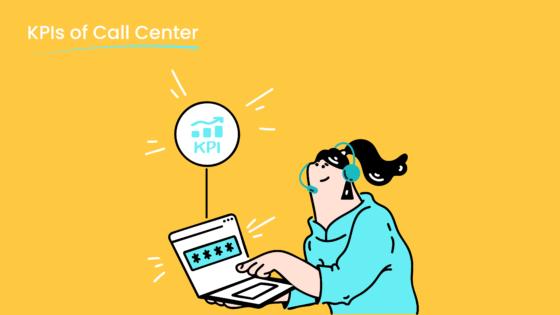
Sobot’s Voice/Call Center plays a pivotal role in recovering dissatisfied customers. Its intelligent features, such as smart call routing and real-time monitoring, ensure that customer issues are resolved efficiently and empathetically. This approach significantly reduces the risk of losing customers due to unresolved complaints.
| Source | Statistic |
|---|---|
| Zendesk | 78% of customers are willing to cancel a subscription due to a bad service experience. |
| Businesses with quicker response times retain 60% more customers than those with less responsive support. | |
| Gartner | 64% of customers would cancel subscriptions after a single unresolved issue. |
| 78% are more likely to continue subscriptions if issues are handled with empathy and efficiency. | |
| HubSpot | 70% of subscription customers cite poor customer service as a major factor in cancellation. |
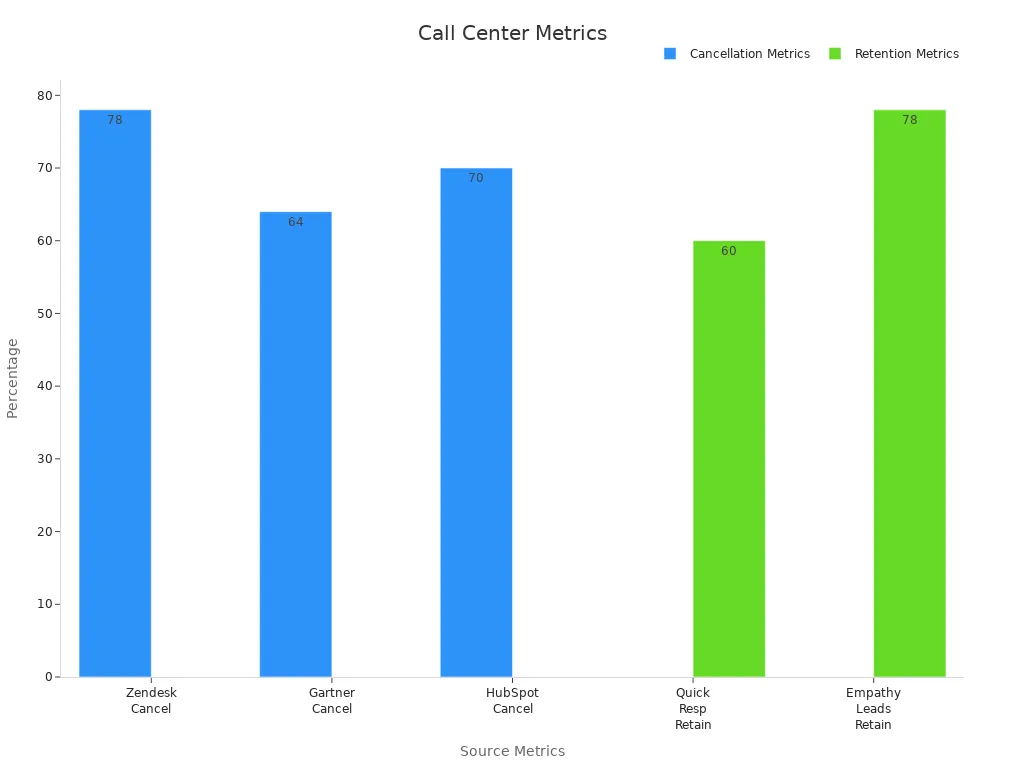
By leveraging Sobot’s advanced features, such as AI-powered Voicebots and intelligent IVR, you can address customer concerns promptly. These tools not only enhance first-call resolution rates but also demonstrate your dedication to customer satisfaction. When customers see your commitment to resolving their issues, they are more likely to remain loyal, even after a negative experience.
The Role of Technology in De-escalation and Customer Service
AI-Powered Tools for Faster Resolutions
AI-powered tools have revolutionized customer service by enabling faster and more efficient resolutions. These tools handle routine inquiries 24/7, ensuring immediate support for customers while freeing agents to focus on complex issues. For instance, AI chatbots personalize responses based on customer profiles and past interactions, enhancing the overall experience.
Studies show that support agents using AI handle 13.8% more inquiries per hour, while programmers complete 126% more projects weekly. This efficiency translates into quicker resolutions and higher satisfaction rates. AI also automates repetitive tasks like ticket categorization and routing, reducing manual effort and improving workflow.
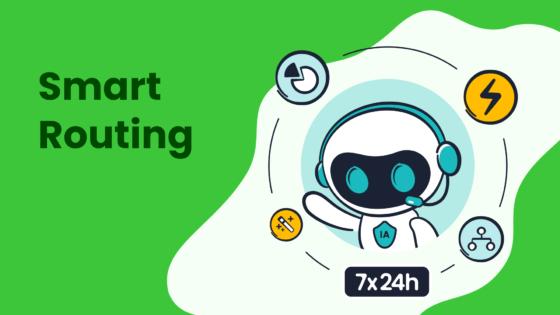
Sobot’s AI-powered Voicebot exemplifies this innovation. It uses intelligent interaction and intent recognition to address customer concerns promptly. By integrating AI into your operations, you can reduce wait times, improve first-contact resolution rates, and elevate your customer service standards.
Did you know? The market for AI in call centers is projected to exceed $4 billion by 2027, highlighting its growing importance in the industry.
Sobot’s Omnichannel Solution for Seamless Interactions
Seamless communication across platforms is essential for effective customer service. Sobot’s omnichannel solution consolidates interactions from multiple channels—voice, email, social media, and more—into a unified workspace. This integration ensures consistent and personalized support, regardless of the customer’s preferred platform.
Real-world implementations demonstrate its impact. A major fresh food e-commerce client reduced waiting times by 35% after integrating Sobot’s call center and ticketing system. Similarly, Renogy leveraged AI-driven natural language processing to enhance customer experiences and improve knowledge learning efficiency.
| Implementation | Evidence | Impact |
|---|---|---|
| Fresh food e-commerce | Integrated call center and ticketing system | 35% reduction in waiting time |
| Renogy | AI Agent using NLP and LLM | Faster knowledge learning efficiency |
| WhatsApp Integration | Improved service efficiency | Enhanced interaction stages |
By adopting Sobot’s omnichannel solution, you can streamline operations, improve response times, and boost customer satisfaction.

Real-Time Monitoring and Analytics with Sobot
Real-time monitoring and analytics are critical for maintaining high-quality customer service. Sobot provides tools that track key performance indicators, offering insights into customer behavior and satisfaction levels. These analytics help identify bottlenecks in interactions, ensuring efficient and meaningful resolutions.
For example, Sobot’s real-time monitoring features enable supervisors to detect and address issues in the support workflow immediately. This proactive approach minimizes delays and enhances the overall customer experience. Businesses using these tools report higher retention rates, with 95% of proactive customer service efforts improving loyalty.
By leveraging Sobot’s analytics, you can optimize your operations, improve agent performance, and ensure every customer interaction adds value.
Automating Follow-Ups to Ensure Satisfaction
Automating follow-ups is a game-changer in customer service. It ensures that no customer feels forgotten after their issue is resolved. Post-purchase follow-ups remind customers of the value of your product or service, significantly influencing their satisfaction and loyalty. For instance, a quick email or call to confirm resolution can leave a lasting positive impression.
Automation also improves efficiency. Studies show that businesses using automated follow-ups experience a 52% faster ticket resolution time and a 1% increase in CSAT scores (4.51 vs. 4.46). Additionally, customers are 2.7 times more likely to return for repeat business when follow-ups are part of the service process.
| Metric | Result |
|---|---|
| CSAT Score Increase | 1% increase (4.51 vs 4.46) |
| Ticket Resolution Time Improvement | 52% faster resolution |
| Customer Retention Impact | 2.7 times more likely to repeat business |
Sobot’s Voice/Call Center simplifies this process with automated follow-up features. These tools ensure that every customer receives timely updates, reinforcing your commitment to their satisfaction. Automation also enhances agent morale by reducing repetitive tasks, allowing them to focus on more meaningful interactions. Balancing automation with personalization strengthens the customer journey, creating stronger connections with your audience.
Tip: Use automated follow-ups to gather feedback. This not only improves your services but also shows customers that their opinions matter.
Training Teams with Advanced Simulations
Effective training is essential for equipping your team with the skills needed to handle challenging customer interactions. Advanced simulations, such as virtual reality (VR) training, provide a safe and controlled environment for agents to practice de-escalation techniques. These simulations replicate real-world scenarios, helping your team build confidence and improve their problem-solving abilities.
A study on VR training for clinicians demonstrated its effectiveness in enhancing verbal de-escalation skills. Participants engaged with virtual agents in workshops, completing multiple interactions that mirrored real-life challenges. The results confirmed that VR training not only improved their skills but also identified new areas for development.
| Aspect | Details |
|---|---|
| Background | Addressed challenges of aggression in clinical settings and critiqued traditional role-play methods. |
| Objective | Assessed the feasibility of using a virtual agent for training in verbal de-escalation skills. |
| Methods | 28 participants engaged in workshops using a VR application, completing multiple interactions with a virtual agent. Observations and reflections were documented, and usability was assessed. |
| Results | VR training enhanced verbal de-escalation skills and identified new factors for future development. |
| Conclusions | Virtual interaction with a VR agent is a feasible and effective method for training, complementing traditional approaches. |
Sobot’s training and support tools can incorporate similar advanced simulations to prepare your team for high-pressure situations. By investing in innovative training methods, you empower your agents to deliver exceptional service, even in the most challenging circumstances.
Did you know? Teams trained with advanced simulations report higher confidence levels and improved performance in real-world scenarios.
Essential Skills for Customer Service Professionals in 2025
Emotional Intelligence and Empathy
Emotional intelligence and empathy are indispensable for handling angry customers effectively. These skills allow you to understand and address the emotions behind a customer’s frustration, creating a more positive customer experience. High emotional intelligence fosters better communication and collaboration, reducing misunderstandings and conflicts. For instance, a 2019 study revealed that incorporating emotional intelligence in conflict resolution improved outcomes by 75%.
Empathy plays a pivotal role in building trust and rapport. When you acknowledge a customer’s feelings, you validate their concerns and demonstrate that their satisfaction matters. For example, saying, “I understand how this situation has impacted you,” can immediately de-escalate tension. A leadership team once used empathetic communication to address customer concerns during a crisis, achieving a 92% customer satisfaction rating within a year. Tools like Sobot’s Voice/Call Center can support this approach by equipping agents with real-time customer data, enabling personalized and empathetic responses.
Tip: Practice active listening to enhance your empathy. Let customers express their frustrations fully before offering solutions.
Effective Communication and Conflict Resolution
Strong communication skills are the backbone of effective conflict resolution strategies. Clear and concise communication ensures that customers understand the steps being taken to resolve their issues. Miscommunication often exacerbates conflicts, so it’s crucial to articulate solutions in a way that aligns with the customer’s expectations.
Using positive language can transform a negative interaction into a constructive one. For example, instead of saying, “We can’t do that,” you could say, “Here’s what I can do to assist you.” This approach shifts the focus from limitations to possibilities, improving the overall customer experience. Sobot’s omnichannel solution enhances communication by providing a unified workspace, ensuring consistent messaging across all platforms.
As Bernard Marr, a futurist and technology advisor, states: “Success in 2025 will belong to those who can seamlessly integrate technological acumen with distinctly human capabilities.”
Adaptability in a Technology-Driven Environment
Adaptability has become a cornerstone skill in the rapidly evolving landscape of customer service. With 77% of business leaders emphasizing its importance, your ability to navigate technological advancements and changing customer expectations is critical. For example, AI-powered tools like Sobot’s Voice/Call Center enable you to handle routine inquiries efficiently, freeing up time to focus on complex issues.
Adapting to new technologies also involves leveraging data analytics for decision-making. Analytical thinking is expected to rise in importance for 72% of companies between 2023 and 2027. By using real-time monitoring and analytics, you can identify trends, predict customer needs, and proactively address potential issues. This adaptability not only enhances customer satisfaction but also positions you as a forward-thinking professional in the industry.
Did you know? Businesses that embrace adaptability report a 30% improvement in operational efficiency, highlighting its value in today’s customer service environment.
Problem-Solving and Decision-Making Under Pressure
In high-pressure customer service situations, your ability to solve problems and make decisions quickly can define the outcome. These skills not only help you manage crises effectively but also inspire confidence in your team and customers. Developing these abilities ensures smoother operations and minimizes risks during emergencies.
To excel under pressure, you need a clear strategy. Start by understanding your objectives. Knowing the desired outcome allows you to focus on solutions rather than distractions. Prioritize tasks based on urgency and importance to allocate resources effectively. For example, if a customer faces a billing error during a peak sales period, addressing their concern immediately can prevent further dissatisfaction.
Managing stress is equally important. Techniques like mindfulness and physical exercise can improve your focus and cognitive function. Scenario planning and risk assessments also prepare you for unexpected challenges, enabling systematic decision-making. Tools like Sobot’s Voice/Call Center enhance this process by providing real-time data and intelligent call routing, ensuring you address critical issues promptly.
Tip: Practice emotional regulation to maintain clarity. Staying calm under pressure helps you think logically and communicate effectively.
Continuous Learning and Skill Development
Continuous learning is essential for staying relevant in today’s fast-paced customer service landscape. By improving your skills, you not only enhance your performance but also increase your confidence and job satisfaction. A well-trained team can tackle complex customer issues with innovative solutions, fostering loyalty and reducing churn rates.
Investing in skill development benefits both you and your organization. For instance, learning to use advanced tools like Sobot’s omnichannel solution can improve your adaptability and efficiency. This platform consolidates customer interactions, enabling you to provide seamless and personalized support. Additionally, continuous learning prepares you for lateral moves within your company, ensuring job security in a changing market.
Organizations that prioritize employee growth often see higher engagement levels. When your employer invests in your development, it boosts morale and demonstrates their commitment to your success. This creates a positive work environment where you feel valued and motivated to excel.
Did you know? Employees who engage in continuous learning report fewer errors and higher proficiency, leading to better customer experiences.
Addressing customer anger with professionalism and empathy is essential for building trust and loyalty. By focusing on clear communication and proactive solutions, you can turn negative experiences into opportunities for growth. Technology plays a vital role in this process. Tools like Sobot’s Voice/Call Center and omnichannel solutions streamline interactions, ensuring every customer feels valued. Implementing these strategies not only improves satisfaction but also strengthens long-term relationships. Explore Sobot’s innovative solutions to elevate your customer service and create lasting connections.
FAQ
1. How can Sobot’s Voice/Call Center improve customer service efficiency?
Sobot’s Voice/Call Center enhances efficiency by automating routine tasks like call routing and follow-ups. Its AI-powered Voicebot handles inquiries 24/7, reducing agent workload. Businesses using this tool report a 30% improvement in operational efficiency and faster resolution times. Learn more here.
2. What industries benefit most from Sobot’s omnichannel solution?
Sobot’s omnichannel solution supports industries like retail, financial services, gaming, and education. For example, a fresh food e-commerce client reduced waiting times by 35% after integrating Sobot’s tools. Its versatility ensures seamless communication across platforms, making it ideal for diverse sectors.
3. How does Sobot ensure data security in customer interactions?
Sobot prioritizes data security with encrypted data transfer and a 99.99% system uptime. Its solutions comply with global standards, ensuring safe and reliable customer interactions. This commitment builds trust and protects sensitive information.
4. Can Sobot’s tools help reduce customer anger?
Yes, Sobot’s tools like the Voice/Call Center and omnichannel solution streamline communication, reducing delays and miscommunication—common triggers of customer anger. Features like real-time monitoring and intelligent IVR ensure faster resolutions, improving customer satisfaction.
5. Why is follow-up important in customer service, and how does Sobot assist?
Follow-ups show customers you value their experience. Sobot automates follow-ups through its Voice/Call Center, ensuring timely communication. Businesses using automated follow-ups report a 52% faster ticket resolution time and higher customer retention rates.
See Also
Enhancing Customer Satisfaction Through Effective Live Chat Strategies
Comparative Analysis of Leading Customer Feedback Software Solutions
Guidelines for Selecting Social Media Customer Support Tools